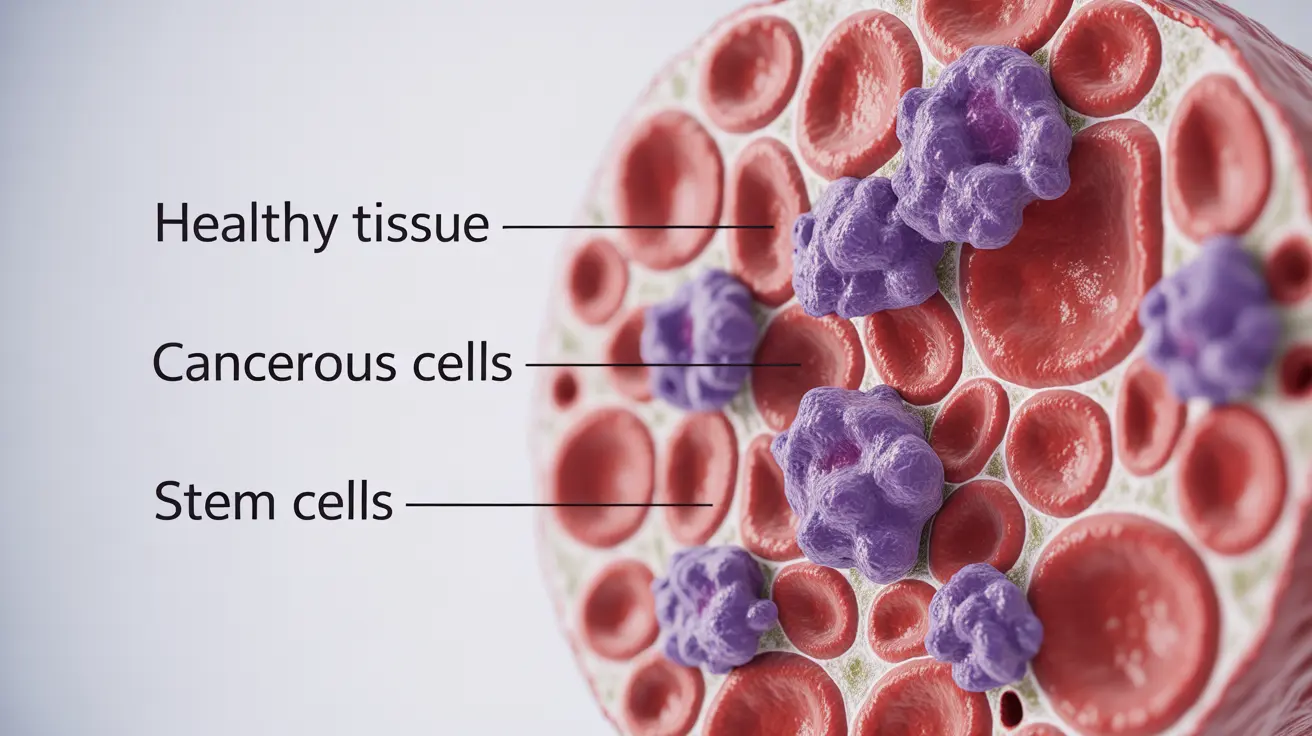Bone marrow cancer represents a group of serious blood disorders that develop in the spongy tissue inside your bones where blood cells are produced. This condition affects thousands of people annually and requires careful medical attention for proper diagnosis and treatment. Understanding the key aspects of bone marrow cancer can help identify warning signs early and lead to better outcomes.
While several types of cancer can affect bone marrow, multiple myeloma is the most common form. This comprehensive guide explores the essential aspects of bone marrow cancer, including its symptoms, diagnosis methods, and current treatment approaches.
Key Signs and Symptoms of Bone Marrow Cancer
Bone marrow cancer can present with various symptoms that may initially seem unrelated but collectively signal a serious condition:
- Persistent bone pain, especially in the spine, ribs, and pelvis
- Unexplained fatigue and weakness
- Frequent infections due to weakened immunity
- Easy bruising or bleeding
- Shortness of breath
- Unexplained weight loss
These symptoms often develop gradually and may be mistaken for other conditions, making early recognition crucial for proper treatment.
Diagnostic Process and Testing
Diagnosing bone marrow cancer requires a comprehensive medical evaluation and several specialized tests:
Blood Tests
Doctors typically begin with complete blood count (CBC) tests and specialized protein tests to check for abnormal cells and proteins characteristic of bone marrow cancer.
Imaging Studies
Various imaging techniques help visualize bone damage and identify affected areas:
- X-rays
- CT scans
- MRI scans
- PET scans
Bone Marrow Biopsy
This crucial diagnostic procedure involves collecting a small sample of bone marrow tissue for laboratory analysis. It helps determine the type and extent of cancer present.
Treatment Approaches
Treatment for bone marrow cancer typically involves a combination of therapies tailored to each patient's specific condition:
Targeted Therapies
Modern treatments often include medications designed to target specific cancer cells while minimizing damage to healthy tissue.
Chemotherapy
Traditional chemotherapy remains an important treatment option, often used in combination with other approaches.
Stem Cell Transplantation
This advanced treatment option can be particularly effective for eligible patients, potentially offering long-term remission or cure in some cases.
Supportive Care
Additional treatments may include:
- Pain management
- Bone-strengthening medications
- Blood transfusions
- Antibiotics for infections
Understanding Bone Marrow vs. Bone Cancer
It's important to distinguish between bone marrow cancer and bone cancer. While bone cancer affects the hard outer tissue of bones, bone marrow cancer develops in the soft, blood-forming tissue inside bones. This distinction affects both diagnosis and treatment approaches.
Frequently Asked Questions
What are the main symptoms to watch for in bone marrow cancer?
The primary symptoms include persistent bone pain, frequent infections, easy bruising or bleeding, fatigue, weakness, and unexplained weight loss. Any combination of these symptoms warrants medical attention.
How is bone marrow cancer diagnosed by doctors?
Doctors use a combination of blood tests, imaging studies (X-rays, CT scans, MRI), and bone marrow biopsy to diagnose bone marrow cancer. The comprehensive evaluation helps determine the type and extent of the disease.
What treatment options are available for multiple myeloma and other bone marrow cancers?
Treatment options include targeted therapies, chemotherapy, stem cell transplantation, and supportive care measures. The specific treatment plan depends on the type of cancer, its stage, and the patient's overall health.
What is the difference between bone marrow cancer and bone cancer?
Bone marrow cancer develops in the soft, blood-forming tissue inside bones, while bone cancer affects the hard outer tissue of bones. This fundamental difference influences both diagnosis and treatment approaches.
Can bone marrow cancer be cured with stem cell or bone marrow transplants?
While stem cell transplants can potentially lead to long-term remission or cure in some cases, success rates vary depending on multiple factors, including the type of cancer, patient age, and overall health status. It's not a guaranteed cure but can be an effective treatment option for eligible patients.




